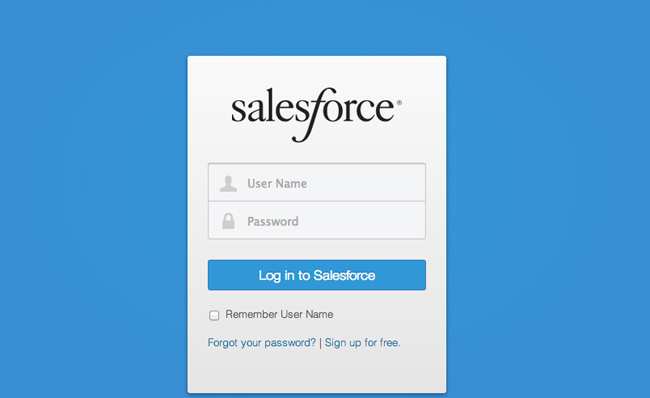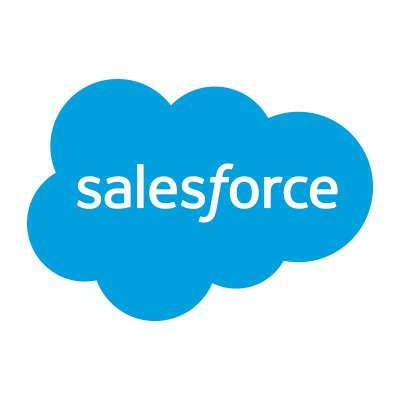Free Your Data! How an iPaaS Can Make You a Salesforce Super Analyst

Data is increasingly seen as the currency of modern business. In fact, the majority of business executives surveyed in a 2016 Capgemini survey said their data is just as valuable to their bottom line as the products or services they actually sell. Think about that for a minute; it would seem that data is quickly becoming the most valuable asset a company can have. This begs the question of how can companies access their data in a more efficient way, unlocking the value. Unfortunately, the proliferation of best-of-breed, software-as-a-service (SaaS) applications has generated more data silos, making it hard to access, correlate and otherwise monetize.
Sometimes even within a single SaaS application you may be restricted by the application's data structure (e.g., you have limited control over system objects in Salesforce, such as contact roles), which prevents you from answering questions critical to your business. Given the Capgemini findings, it would stand to reason that this is no mere inconvenience. We're now talking about limiting value and impacting the business's ability to perform to as it should.
Even when working with mature and very capable products, such as Salesforce - the top-selling CRM platform, you often run into areas where you would like to have more control over the data than what they provide. All's not lost, however. A cloud-based integration platform, or integration platform as a service (iPaaS), has emerged as a fast, efficient way to unlock data in Salesforce and integrate Salesforce to other common data silos, including both cloud-based and on-premises applications. Let's explore a few ways that an iPaaS can help you unlock the trapped value, transforming yourself from a CRM curator into a super analyst.

Greater visibility across segregated Salesforce objects
One common hang up that Salesforce.com users experience is that the data in distinct objects aren't automatically or inherently compatible. The data barrier between these Salesforce objects either prevents you from seeing relationships across that barrier or, if you are SQL-savvy, forces you to take data out of Salesforce and manipulate it offline using SQL scripts before loading the enriched data back into Salesforce. Using an offline process like this is error-prone, manual, and requires significant time and effort to manually bridge the gap at any sort of scale.
Leveraging the power of an iPaaS, a Salesforce analyst can have the power to integrate two Salesforce objects. An iPaaS can automate this type of extract, manipulate and load process. You can build a solution once and run it many times. In fact, with its scheduler or event-driven triggers, the iPaaS can kick off a data manipulation without any manual intervention. You can set it up to pull data out of Salesforce, load it into SQL, manipulate the data using SQL or built-in transformation functions, and load the data right back into Salesforce. No need to work with the Salesforce API directly or, worse, Excel exports. By integrating two (or more) Salesforce objects together, a Salesforce super user opens the door to bring data together with automated extractions, aggregations, and put-backs. This type of automation and aggregation of useful data can be a boon for a variety of departments from sales to marketing and greatly assist with service reporting.
Enhanced business workflows or customer experiences
That same automation capability of the iPaaS can be used to make business workflows more efficient or to improve your company's interaction with customers. An iPaaS not only passes data in real-time from one application to another, but also orchestrates or synchronizes the actions of various applications. Greater coordination between applications can be used to reduce costs, eliminate time-wasting steps, or provide customers and employees with instant access to information and services they need.
For example: one insurance company used their iPaaS to improve the customer experience in their call center. When a customer calling into the company's call center had their phone call dropped, the iPaaS detected when the case status changed to "disconnected" and triggered an email to go out from a third-party application to help the customer. That email explained to the customer how they could immediately get back in touch with the exact agent handling their case.
Greater data access for reporting
In today's digital business environment, analytics and reporting have to be agile to drive better decision making. Unfortunately, getting Salesforce's data to play nice with other vendor applications or third-party analytics/reporting tools is not always a simple task.
An iPaaS offers dozens of pre-built connectors to data warehouses, databases and other applications, so you can blend the data from Salesforce easily with data from other sources. Again, you can be a super analyst by automating the flow of data - perhaps on a nightly basis - so that data from Salesforce as well as other cloud and on-premises applications is always fresh and your reporting infrastructure is always using the latest data. Integrating Salesforce data with other data sources by simplifying the process of getting data out of Salesforce and blending it with other sources allows a super user to easily cross tabulate the data and run more useful reports.
Future uses in the intelligent office
As more people request data from Salesforce, you should expect that they want easier access to data, no matter where they are located. In fact, more companies are trying to enable employees by creating an intelligent office that has information access points and controllers spread throughout the company. If you really want to wow your co-workers, you could even use an iPaaS to drive your intelligent office. You can elevate your stature to super user by arming your employees with Salesforce data even as they become more mobile. For example, with an iPaaS you can make Salesforce data available on-demand through non-traditional access points, such as the Amazon Echo or Google Home.
While this isn't common yet, being able to get a seamless update on the status of the quarter with a quick question to an Echo on your desk could certainly save a lot of digging time.
Salesforce is a critical tool in the business world but it's the data that lives inside of it that is most crucial. When a Salesforce admin gains the ability to easily manipulate the data in Salesforce, blend it with other systems, and push it to more people through new access points, they elevate themselves from a simple admin to a super user that adds great value to their organization. Once the data is freed and the barriers to data integration are eliminated, the possibilities of what users do with the data is near limitless. The iPaaS is a simple way to gain that stature because it is designed to unlock data in cloud applications and provides the speed and ease of use that most admins demand.
About the Author
 John Joseph is the vice president of marketing at
Scribe Software, where he is responsible for developing Scribe Software's marketing strategy and managing the company's corporate marketing, demand generation, partner marketing and product marketing initiatives. Prior to joining Scribe Software, John was VP of product marketing at Lavastorm Analytics, where he managed the company's launch into the BI/analytics software market. Prior to joining Lavastorm Analytics, John held senior marketing roles at a number of companies with innovative data integration and analytics platforms, including Endeca (acquired by Oracle), InterSystems, Envox Worldwide (acquired by Syntellect) and Engage.
John Joseph is the vice president of marketing at
Scribe Software, where he is responsible for developing Scribe Software's marketing strategy and managing the company's corporate marketing, demand generation, partner marketing and product marketing initiatives. Prior to joining Scribe Software, John was VP of product marketing at Lavastorm Analytics, where he managed the company's launch into the BI/analytics software market. Prior to joining Lavastorm Analytics, John held senior marketing roles at a number of companies with innovative data integration and analytics platforms, including Endeca (acquired by Oracle), InterSystems, Envox Worldwide (acquired by Syntellect) and Engage.
Subscribe to Our Newsletter!
Latest in Software









